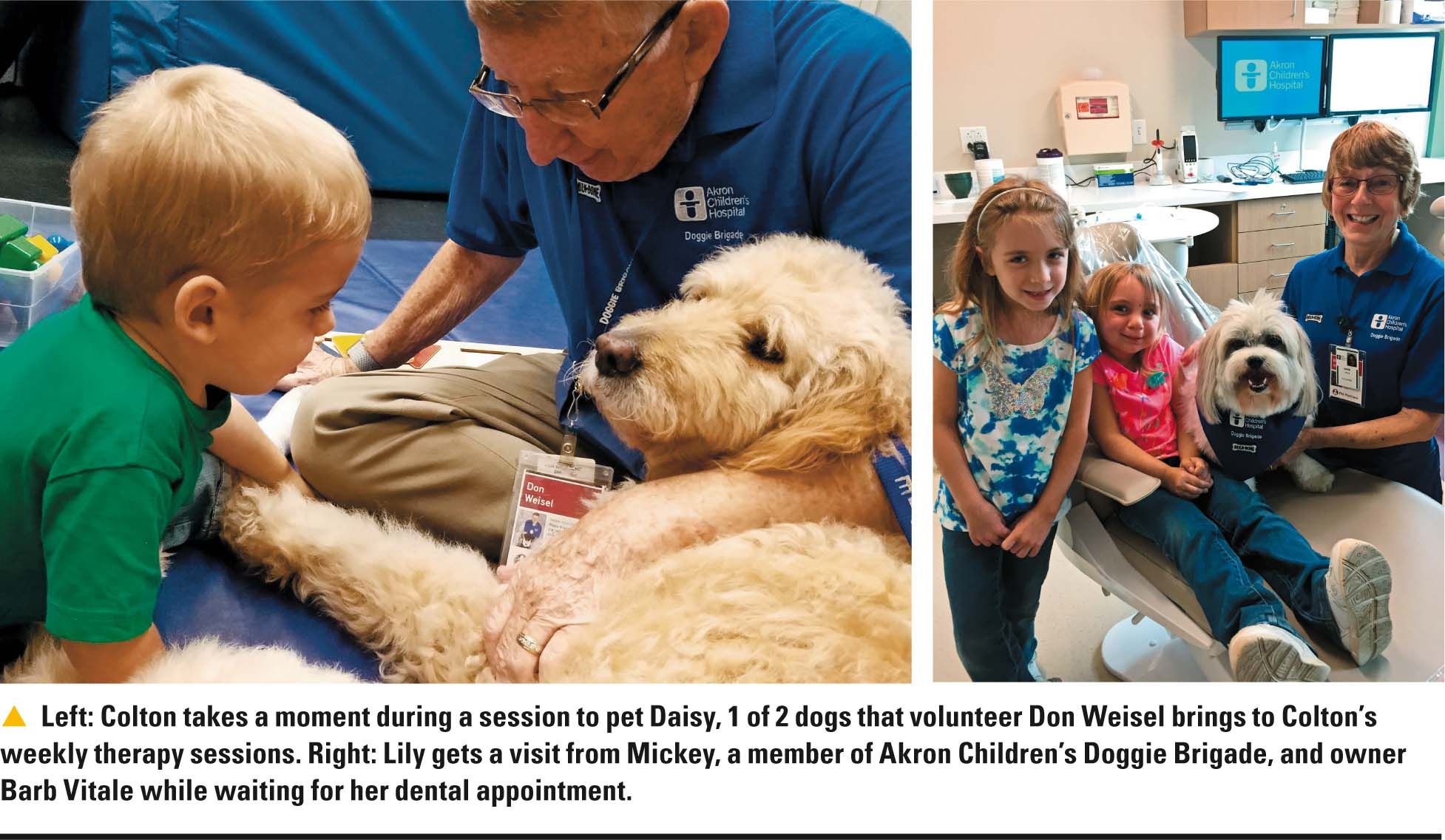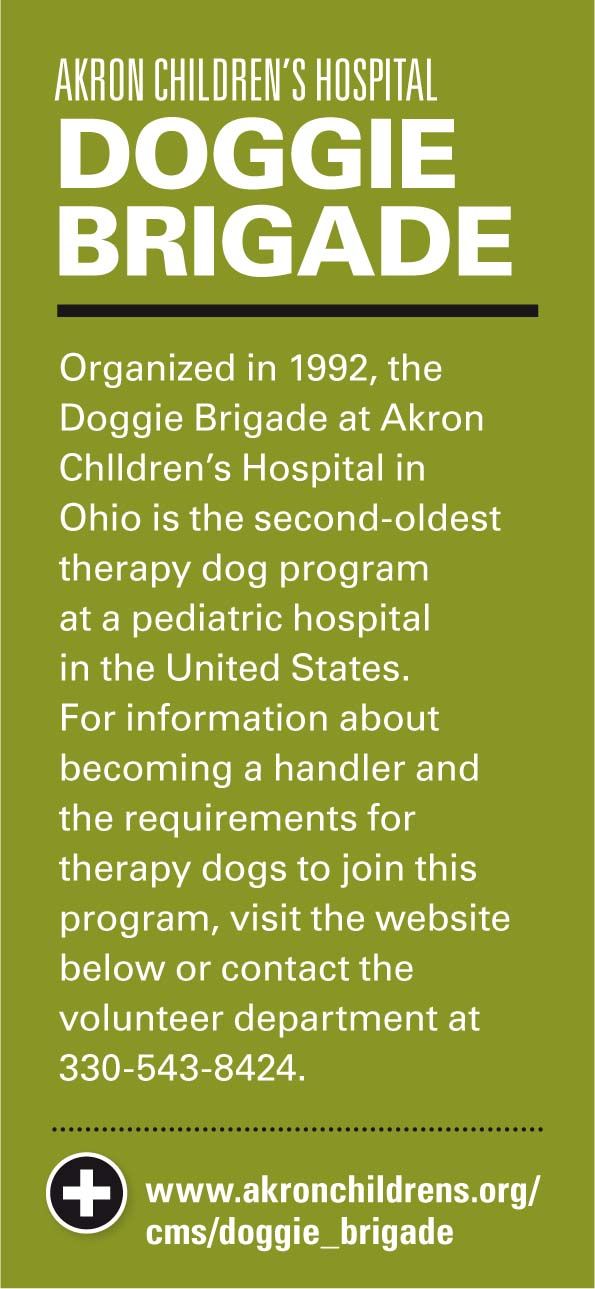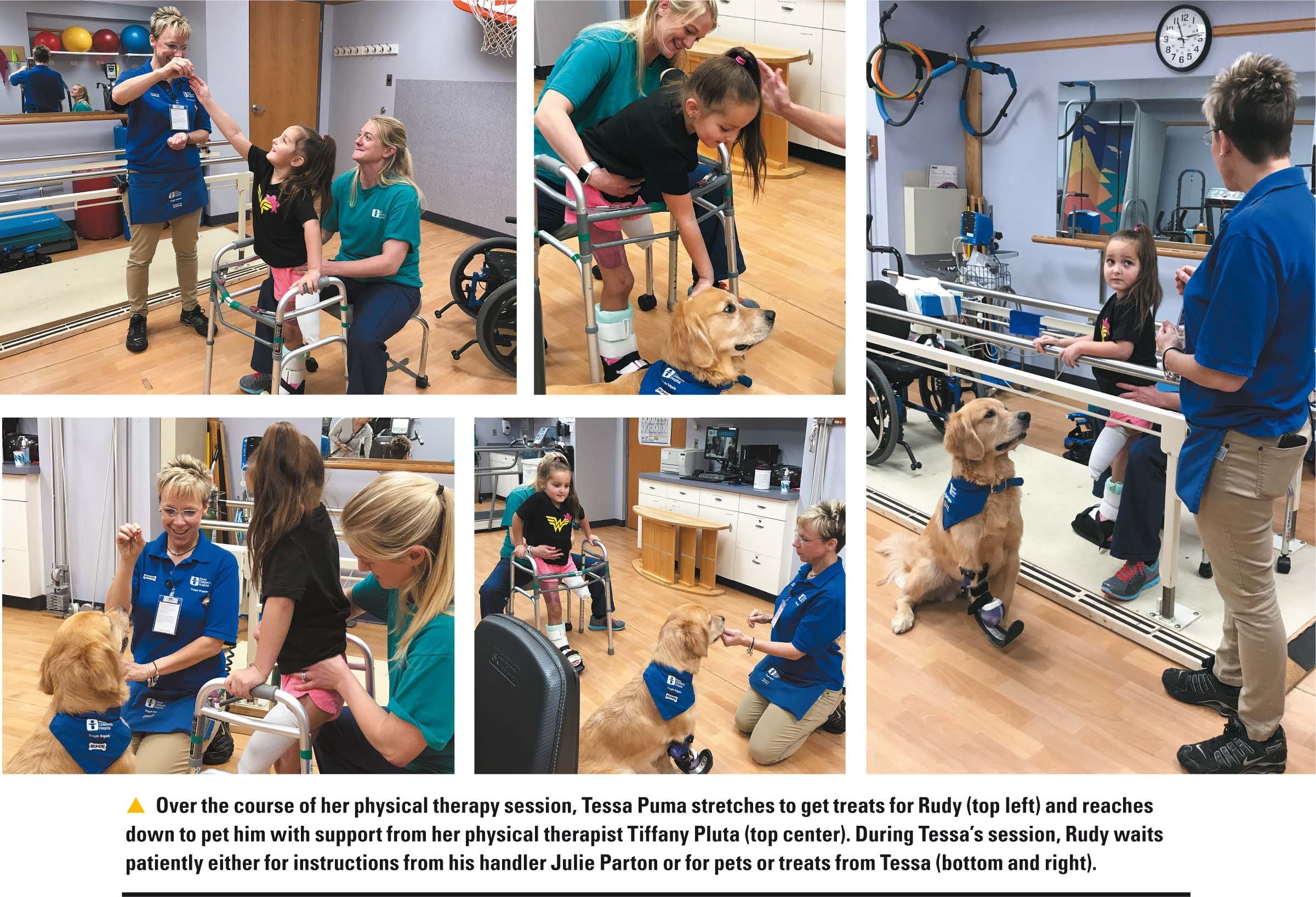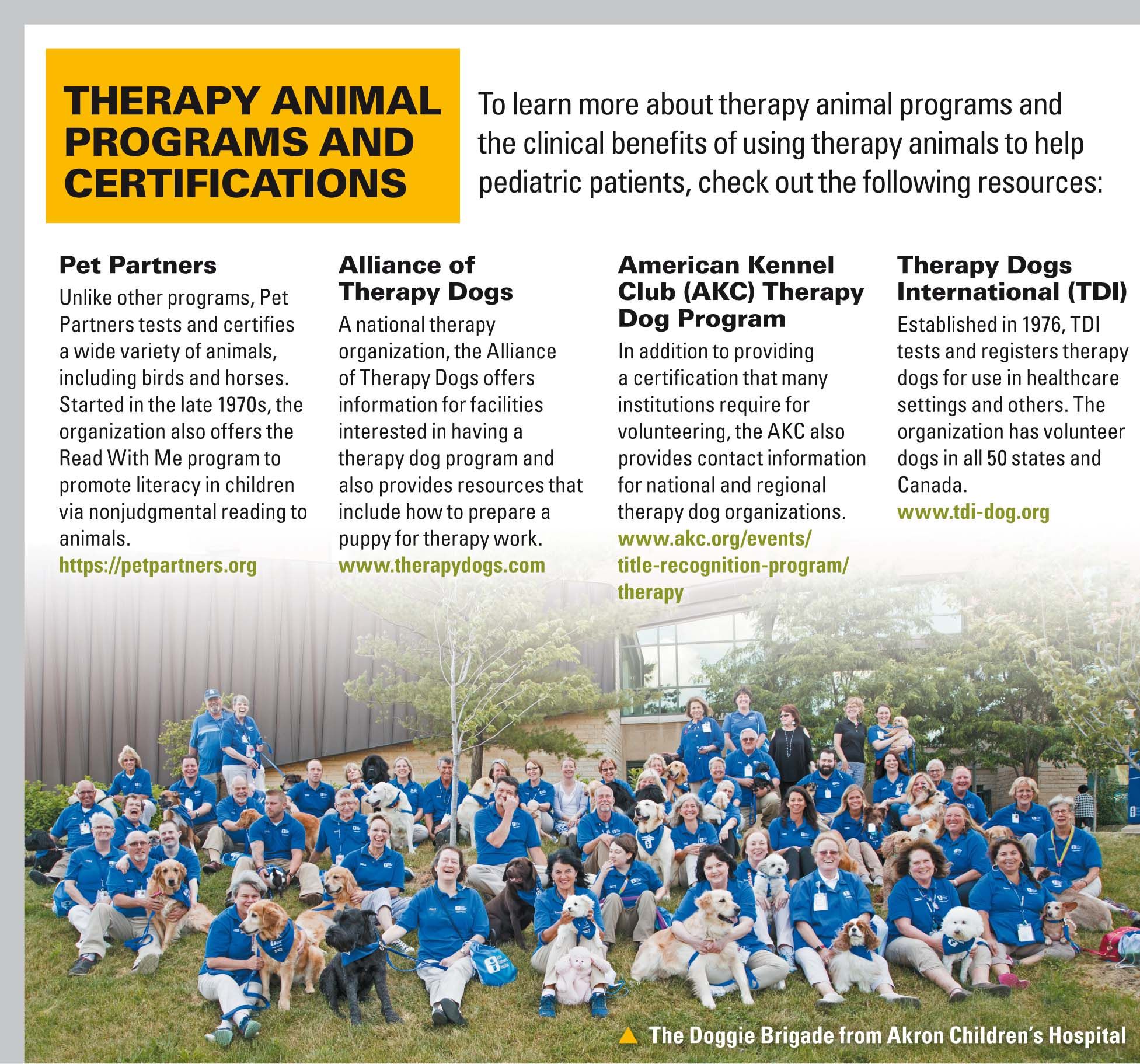Puppy brigade reports for duty
A therapy dog program at a children’s hospital provides comfort for pediatric patients and families facing the unfamiliar and a sense of normalcy that makes a frightening hospital experience less so.
It may be hard to imagine that nearly 90% of hospitals in the United States allow therapy animals and animal visits,1 and many have therapy animal programs, but there once was a time when animals were more likely to be seen as a hindrance to healing than as an aid. Even now, some individuals remain skeptical about the actual benefit derived from allowing therapy animals into hospitals and other points of care, and argue that the practice has raced ahead of the evidence.2 Ask anyone who works with patients, however, and the anecdotal evidence is clear: Having a furry friend can help heal, especially when working with children.
Recommended: Persisten agitation in children with neurologic impairments
Therapy animals can range from birds and horses to cats and guinea pigs, but dogs are likely the first therapy animal that comes to mind. A variety of organizations exist to certify animals for therapy work, including Pet Partners, Therapy Dogs International, and the Alliance of Therapy Dogs.

In order for a prospective therapy dog to be certified by an organization, its handler must have owned the animal for at least 6 months, and he or she will often need to take a course on how to properly handle dogs. For the canine side of the equation, the dog must show basic obedience; be up-to-date on its rabies vaccination; be house trained; and have a welcoming demeanor with no history of aggression. Handlers who want more bona fides for their therapy animals are also able to receive Therapy Dog credentials from the American Kennel Club, which now comes with the Canine Good Citizen title.3
Akron Children’s Hospital’s therapy dog program
The second-oldest therapy dog program at a pediatric hospital in the United States, the Doggie Brigade at Akron Children’s Hospital in Akron, Ohio, boasts over 80 dogs. The teams commit to going on 26 visits per year, with each visit lasting an hour or more. Volunteer teams who visit the hospital’s main campus must also commit to attending at least 2 special events every year. The Doggie Brigade requires dogs to be registered as therapy animals via Pet Partners. While visiting, each dog must wear a bandana declaring it a member of the hospital’s therapy program and the handler must wear a shirt bearing the same identification.


Every Doggie Brigade member gets treated like a rock star with its own baseball-style card that features its photo and specific stats, including what breed the dog is, when it joined the program, and what is its favorite treat. The handler carries copies of the cards and gives them to every child, whether patient or visitor, who interacts with the dog. For some children, a complete collection means a battle hard fought to meet every furry ambassador, and all patients get to take home their very own Beanie Baby, which has been specially designed for the hospital.
For most of the Doggie Brigade, the typical visit lasts only a few minutes with the child getting to meet the Brigade member and the human half of the team. Those few minutes may be only a small part of the dog’s day, but the program’s website is filled with stories submitted by family members saying how comforting it was to have a dog curl up next to the child for a few minutes or how a brief moment of normalcy helped make a frightening experience less so. For certain members of the Brigade, however, their patience and calmness with people qualifies them for an even bigger job: helping children in their physical and occupational therapy sessions.
NEXT: A day in the life of a therapy dog
A day in the life of a therapy dog
On the day that Contemporary Pediatrics visited Akron Children’s Hospital, the editor partnered with therapy dog handler Julie Parton and her golden retriever Rudy, who recently celebrated his third birthday. Rudy shares a special bond with many of the children he helps because he was born without a fully formed right front leg and wears a purple prosthetic paw.
Before they come to volunteer, Julie makes sure to have Rudy washed and groomed. Initially, the editor saw Rudy happily meet with other volunteers, support staff, doctors, and children who were waiting for appointments or for siblings to be done with appointments. Then Julie and Rudy went downstairs to the physical therapy department, and it was there that they joined a physical therapy session with patient Tessa Puma.
Tessa’s story
Before Tessa Puma made international headlines in early 2017, she was an active 6-year-old girl who loved to play sports and dance. In March she was diagnosed with strep throat, and then a few weeks later she became ill with the flu and complained about pains in her arm and leg.4 Tessa was rushed to Akron Children’s, where doctors determined that the strep infection had entered her bloodstream and caused necrotizing fasciitis, a severe bacterial skin infection. After determining that no pulse could be detected in her left foot, the decision was made to amputate Tessa’s lower leg.
More: How to perform a better physical exam
Therapy sessions typically run for an hour and are physically as well as emotionally taxing for the patient. That’s where Rudy and other members of the Doggie Brigade step in by providing encouragement for progress and no judgement if the session doesn’t go well. Additionally, focusing on the dog allows the time to pass more quickly for the child.

During Tessa’s therapy session, she worked with her physical therapist to build up strength in her right leg and become accustomed to the shift in balance that would occur once her prosthetic was ready. Over the course of the hour, Tessa walked to meet Rudy using the parallel bars and reached down to give him pats when she successfully reached the end. Then she progressed to a walker to become comfortable using the device and develop the balance needed to move it. Tessa maneuvered the walker toward Julie, who would give her Rudy’s treats, and then she walked to a waiting Rudy to give him his reward.

Sometimes Rudy would decide that Tessa needed a challenge, and he would lie down, forcing her to stretch out even further to give him the treat. Tessa wrapped up her session for the day by doing strength/movement exercises involving her lower body, during which she gave Rudy a treat after finishing each exercise rep. The sweat on her brow was indicative of how much physical effort she was putting into the therapy, but with a big smile on her face.
NEXT: From "wags" to riches
When Tessa’s parents joined her at the end of her therapy session, Julie and Rudy showed another benefit of the Doggie Brigade team, especially members like Rudy. Julie was able to talk about the potentially lengthy trial-and-error process that can occur when fitting prosthetics, and she revealed that Tessa’s prosthetic leg was going to be coming from the same company that made Rudy’s prosthetic paw.
Following the therapy session, Julie and Rudy returned to the volunteer office to change out of their volunteer gear. Even though he was tired from helping Tessa, Rudy was still happy to be petted and wagged his tail for other children and staff. Before heading home, the pair stopped at the hospital’s cafeteria for a hot dog-Rudy’s reward for a job well done.
From “wags” to riches
When Tessa was finally discharged from the hospital, the Puma family spoke often about the positive impact that the Doggie Brigade family had made on their family during her stay. Tessa joined the thousands of other children and parents who had a stressful experience turned into something memorable and positive because of the comfort provided by therapy animals.
Although the randomized multicenter studies on the efficacy of therapy animals may be lacking, it would be hard to declare these 4-legged ambassadors unhelpful when walking around Akron Children’s Hospital with the Doggie Brigade.

REFERENCES
1. McKinney M. Best practices: Safety first when dogs visit patients. Modern Healthcare. Available at: http://www.modernhealthcare.com/article/20150606/MAGAZINE/306069996. Published June 6, 2015. Accessed November 10, 2017.
2. Oksman O. Paws for thought: How pet therapy is gaining traction. Guardian. Available at: https://www.theguardian.com/lifeandstyle/2015/dec/30/animal-assisted-therapy-nih-veterinary-science-mental-health-american-heart-association. Published December 30, 2015. Accessed November 10, 2017.
3. American Kennel Club. AKC Therapy Dog Program. Available at: http://www.akc.org/dog-owners/training/akc-therapy-dog-program/. Accessed November 10, 2017.
4. Jones B. Nordonia kindergartner loses leg after strep throat, flu leads to infection. News 5 Cleveland. Available at: http://www.news5cleveland.com/news/local-news/akron-canton-news/nordonia-kindgergartner-loses-leg-after-strep-and-flu-leads-to-infection. Published April 3, 2017. Accessed November 10, 2017.
Ms Hester is a content specialist for Contemporary Pediatrics. She has nothing to disclose in regard to affiliations with or financial interests in any organizations that may have an interest in any part of this article.